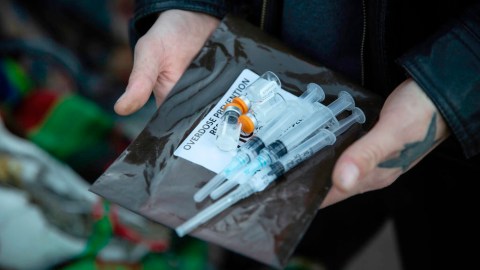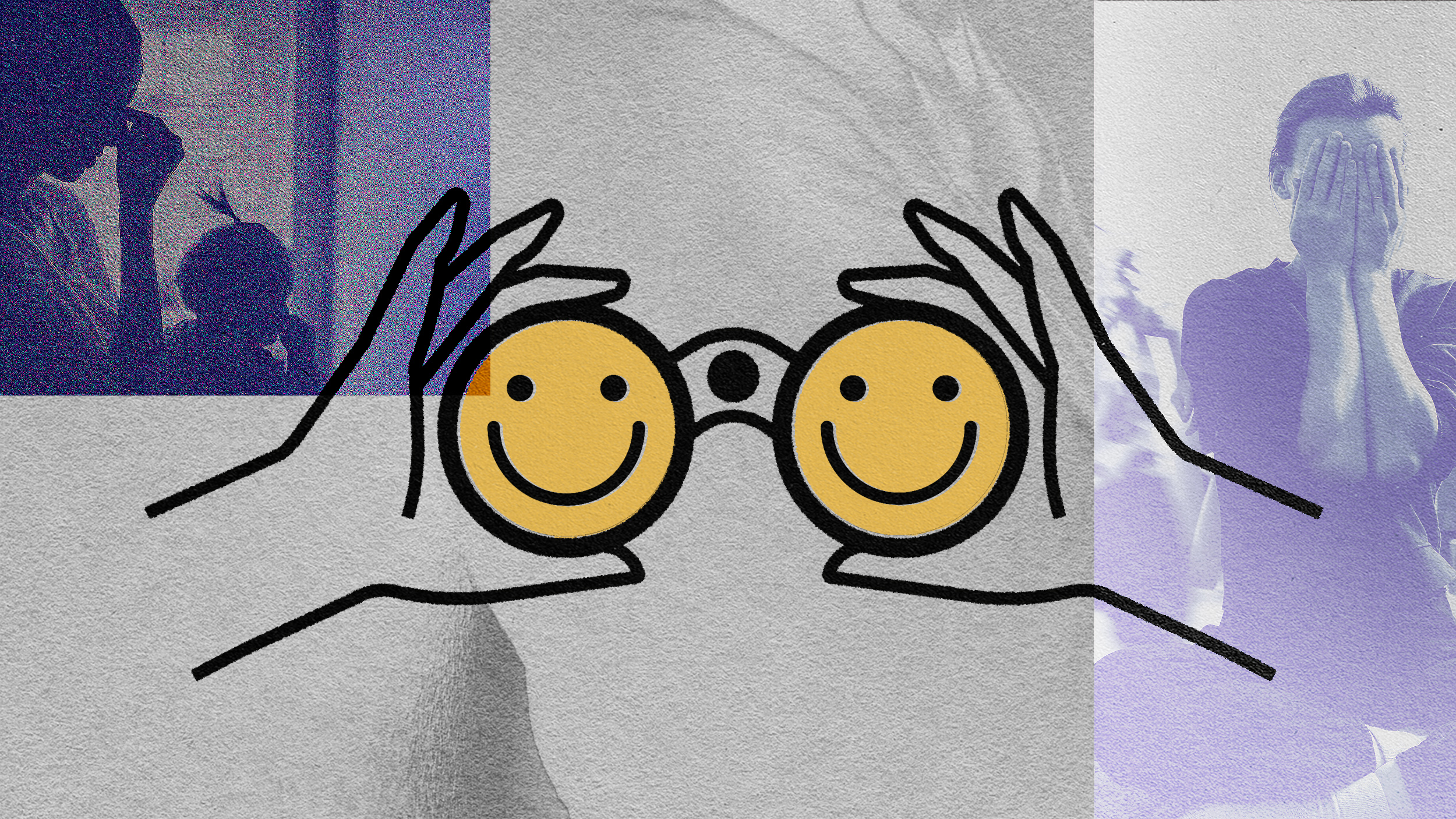Americans now more likely to die from opioids than car crashes

Narcan kits are available at a homeless encampment in Minneapolis, Minnesota on October 22, 2018.
- Each American has about a 1 in 7,569 chance of dying from an opioid overdose, according to a National Safety Council report. The probability of dying in a motor vehicle accident is 1 in 8,096.
- The death rate for opioids is now six times higher than it was in 1999, with about 130 Americans dying every day from the drugs.
- Narcan is a life-saving drug that can stop opioid overdoses in their tracks, however factors like stigma and cost are preventing this antidote from becoming more accessible.
For the first time in U.S. history, Americans are more likely to die from opioid overdoses than car accidents, according to a new report from the nonprofit National Safety Council.
Americans have a 1 in 7,569 chance of dying from an opioid overdose, while the probability of dying in a motor vehicle accident is 1 in 8,096. Those odds were calculated by dividing the total U.S. population by the total number of deaths for each cause in 2017, using data on preventable deaths from the National Center for Health Statistics.
“We’ve made significant strides in overall longevity in the United States, but we are dying from things typically called accidents at rates we haven’t seen in half a century,” Ken Kolosh, manager of statistics at the National Safety Council, said in a press release. “We cannot be complacent about 466 lives lost every day. This new analysis reinforces that we must consistently prioritize safety at work, at home and on the road to prevent these dire outcomes.”
The figures on opioid deaths are even more startling when presented in terms of lifetime odds, which are approximated by dividing the one-year odds of dying from a particular cause by the life expectancy of a person born in 2017 (78.6 years). Measured this way, Americans have a 1 in 96 probability of dying from an opioid overdose.
The lifetime odds of dying in a plane crash? 1 in 188,364.

“As human beings, we’re terrible at assessing our own risk,” Kolosh told National Public Radio. “We typically focus on the unusual or scary events … and assume that those are the riskiest.”
Opioids abuse and overdoses have been on the rise for years. In 2017, more than 49,000 people died of opioid overdoses, according to the National Institute on Drug Abuse. That’s about six times higher than the rate for 1999. Now, an average of 130 Americans die every day from an opioid overdose.
The increased availability of fentanyl, a powerful synthetic opioid, is partly responsible for the recent spike in opioid overdoses, the council said in the press release.
“The nation’s opioid crisis is fueling the Council’s grim probabilities, and that crisis is worsening with an influx of illicit fentanyl.”
Can Narcan curb the opioid crisis?
There’s one life-saving drug that, if administered quickly and properly, can stop nearly all opioid overdoses in their tracks: naloxone, commonly known as Narcan. Patented in 1961, the drug works by preventing the brain’s receptors from bonding with opioids, eliminating their effects on the body. Narcan can’t stop the addiction, but it can stop an overdose.
In 2018, U.S. Surgeon General Jerome Adams issued an advisory calling for more people to carry and learn how to administer Narcan, which is already carried by many EMTs and police officers.
“The call to action is to recognize if you’re at risk,” Adams told NPR. “And if you or a loved one are at risk, keep within reach, know how to use naloxone … We should think of naloxone like an EpiPen or CPR. Unfortunately, over half of the overdoses that are occurring are occurring in homes, so we want everyone to be armed to respond.”
Some believe making Narcan more accessible is the key to curbing the opioid crisis. That’s why most U.S. states have recently implemented a so-called standing order that allows people to get Narcan from a pharmacist without having to visit a doctor. Still, several factors seem to be preventing Narcan from being as ubiquitous as advocates like Adams might hope.
One problem is stigma. A 2017 study published in the Journal of the American Pharmacists’ Association showed how both pharmacists and addicts report being uncomfortable engaging in face-to-face discussions about the need for Narcan. The researchers argued that this stigma might be reduced through policies that call for pharmacies to universally offer Narcan to patients obtaining opioid prescriptions.
Another component of the stigma surrounding Narcan is an argument that says increasing the drug’s accessibility actually enables addicts. The idea is that addicts are more willing to take risks, and take increasingly dangerous drugs like fentanyl, when they know they have a life-saving drug in their pocket. Proponents of this idea might argue that Narcan “subsidizes recklessness,” but others say denying medical patients a lifesaving drug isn’t the answer.
“I understand the frustration,” Police Chief Thomas Synan Jr. of Newtown, Ohio, told The Associated Press. “I understand the feeling that someone is doing something to themselves, so why do the rest of us have to pay? But our job is to save lives, period.”
But perhaps the biggest obstacle to increasing the accessibility of Narcan is the price. As STATpoints out, a life-saving dose of Narcan cost just $1 a decade ago, but now “costs $150 for the nasal spray, a 150-fold increase,” while a “naloxone auto-injector, approved in 2016, costs $4,500.”
As Stephen Wood wrote for Harvard Law School’s Bill of Health, these price increases came “when the opioid epidemic was at its peak, and they came without any explanation.” If the prices don’t drop, it’s unlikely that efforts like standing orders and community distribution programs will be effective.
Ultimately, Wood argued, it’s all about the money for pharmaceutical companies.
“Naloxone has gone from a $21 million dollar a year industry prior to 2014, to a booming $274 million dollar take per year since 2015. There is no doubt: pharmaceutical companies are making money off the opioid epidemic. Additionally, those who need this drug the most, often don’t have access to it. They are the under- or uninsured, so waving a co-pay is moot.
There are plenty of opportunities to reduce costs. Several authorities have asked for induction of federal law 28 U.S.C. section 1498, which would allow the United States to contract with a manufacturer to act on their behalf to create a less costly product. However, this still puts the onus of the cost on the tax payer. The pharmaceutical industry brought us the opioids that sparked this epidemic, heavily marketing oxycontin and oxycodone, which retail at around $1.25 a pill. What could possibly justify the antidote costing upwards of 3,600 percent more? There is no justification for this and policy makers need to draw their attention to this scamming of the general public in a time of crisis.”





